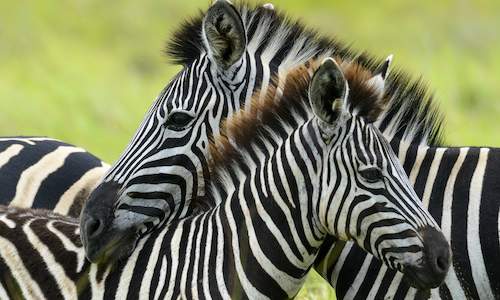
Name
Serval [Leptailurus serval]Appearance
The serval stands at a height of 50 cm at the shoulders and is slender in build. It is covered in a golden-brown coat with black stripes running down its spine and black spots all over its flanks and tail. For its short stature, the serval has incredibly long legs that are about 3 feet in length, whilst standing up to 20 inches in shoulder height. The serval has large round ears, with black and white stripes at the back of them. Observations show that these stripes at the rear of the ears are used to communicate with its species. The all-black melanistic servals are found in moist, densely forested areas in South Africa.Serval Diet
The serval is a carnivore and feeds mainly on rodents, such as vlei rats. Their diet also includes birds, frogs, small reptiles, insects and sometimes fish species indigenous to South Africa.Serval Breeding
After a gestation period of 68-72 days, litters of three to four kittens are born in thick grassy covers or in bushy spots. In South Africa, serval births occur during the end of the summer season. Mothers birth their kittens in lairs, but will constantly move their location to protect them from predators. This has made observing serval young very difficult for researchers.
The mother raises her young alone, and like the cheetah, must leave her young as she hunts. The mother will evict the male kittens from the group first when they are big enough to hunt. The female kittens will stay with the mother until they are sexually mature. Once matured, they are driven away by the mother to find their own territories.
Serval Behaviour
The serval is a solitary creature and only females are seen in groups with her young. The serval is very territorial and will leave their scents in a range of 15 -30 square km. The area is not exclusive to one serval, but they are careful to avoid each other. They leave their scent through urine and faeces markings. The males are territorial over larger areas.
They are nocturnal and hunt using their keen sense of smell and sound. In South Africa, where the serval is isolated they tend to be active during dawn and dusk too. Due to its sharp sense of hearing, it can locate moving prey located underground. The serval, waits, then pounces on its prey at the right moment and sometimes plays with it before eating it. The serval has a variety of sounds used to communicate to others of its species. When in a defence mode, it will arch its back and growl.
 Learning about the mammals of South Africa is now so much easier for all South Africans - SouthAfrica.co.za is an excellent source of inform...
Learning about the mammals of South Africa is now so much easier for all South Africans - SouthAfrica.co.za is an excellent source of inform...